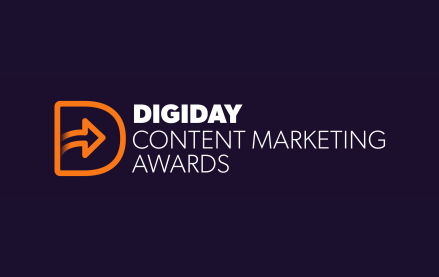How are Saatchi, Almighty, Huge & Vert preparing for a signal-rich future?

Consider the mood ring. This liquid crystal thermometer — probably the world’s first “wearable,” in the current meaning — was marketed as a way to telegraph your mood to the world: groovy, for example, or mellow. Hey, man, it was the 70s.
Flash-forward 40 years and this year’s CES attendees witnessed the debut of the “Melomind,” a wearable headset that reads your brainwaves, syncs to your smartphone and tracks your mood over time. The difference? This latest mood-marker emits 1 and 0s.
While marketers may not have yet harnessed the power of the “Melomind,” there are already enough data signals available that an industry has sprung up around them. This industry, built largely on predictive marketing, uses largely demographic, behavioral and contextual information to serve ads.
But even those data points aren’t necessarily signals of intent. Many are just the equivalent of taking extensive notes while watching consumers.
To learn more about intent marketing’s true future, we asked agency executives how they’re determining consumer intent now — and what signals they expect to look for for next.
How we work today: Predict, predict and predict some more — but use a variety of signals
Gabriel Cheng, M&C Saatchi Mobile: “It’s important to use predictive modeling to develop audience profile that take into account both historical customer data and real-time passive and active signals. For example, passive signals, such as social activity and app behavior, and active signals such as in-store location and mobile engagements like price comparisons provide a much richer user profile.”
Ian Fitzpatrick, chief strategy officer, Almighty: “Known intent signals (wish lists and price alerts) are, broadly speaking, enormously valuable for driving transactions in real-time, while unknown intent signals (tweeting about your dream vacation) have great value in deriving a richer, fuller understanding of who a customer is. They serve very different ends.”
Sophie Kleber, executive director of product and innovation, Huge: “The ‘unknown’ or less tangible statements of intent have very little to do with closing, but they are marketing gold for anticipation. While you might not be able to capitalize on the unknowns immediately (dreaming about a vacation is very far from booking or planning one), you gain many insights around your demographic, what they care about and who you are competing with. Monitoring unknown intent is a form of market research.
Kevin Planovsky, principal, account strategy, Vert: “We have found that when you start to mesh what have traditionally been independent data buckets like sales data, credit card info, CRM and loyalty, magical things happen. It is 100 percent possible today to truly predict exactly what types of customers want certain products and when is the best time to stimulate them to conversion. Amazon has been doing it for years, and now we are finally connecting the dots for offline and retail scenarios.”
Coming soon: Look for the underused signals
Gabriel Cheng: “Marketers are not fully leveraging the strategic use of APIs that are applied to the signals that are passed at every impression. For example, the most common API is applying weather data to location signals at the time of the impression to dynamically deliver a weather-related message. But there are a plethora of APIs that can be applied by just knowing someone’s location and even more when marketers start considering other signals.”
Ian Fitzpatrick: “I’m always curious about the things that users ignore or otherwise don’t engage with, and what those signals portend. As an industry, we tend to ascribe failure to interact to creative failure or inefficiency, when in fact it’s frequently a sign that the user is going to do something else that doesn’t necessarily fit into our well-defined use cases.”
Sophie Kleber: “I think it’s there’s a missed opportunity in ‘how to’ searches, and in the volume to each of these respective how to’s. Most ‘how to’ questions indicate a gap either in the market or in marketing. And it is our job to fill this gap.”
What does the future hold?
Gabriel Cheng: “All the signals coming from the proliferation of all sorts of wearables, smart homes, cord-cutting and smartphone/app dependency will exponentially scale predictive audience targeting as all this data is tied at a one-to-one user level.”
Ian Fitzpatrick: “I think that in the short term, the Internet of Things will add more noise to the conversation. Until we’re able to better connect data to actual intent, more nodes on the network don’t necessarily give us better information.”
Kevin Planovsky: “There is no one signal to rule them all. Blue sky is a standardized platform that can blend, hack and augment any number of available signals in a customized way to fit the particular user-case, brand, target or advertiser.”
What’s on your wish list?
Sophie Kleber: “I’d like to be able to gain insights into people’s New Year’s resolutions lists over time. New Year’s resolutions are aspirational: They reveal people’s deepest dreams, insecurities and ambitions. Looking at them over time can also separate lifestyle themes from trends, and give us a clear picture of what’s important in people’s lives at specific stages. But here’s a crucial caveat: I only want the written lists, not verbal jumble, a la ‘get fit, stop smoking…’. Writing a list requires reflection, deep thinking, it is very personal. And according to Forbes, people with written goals are more successful. That’s the consumer group you want.”
Kevin Planovsky: “100 percent accurate body metrics like heart-rates, activity level… and brainwaves!”
More from Digiday

Google delays third-party cookie demise yet again
For now, Google seems to have next year in mind as the latest end date for its plan to eliminate third-party cookies.

Amazon Ads, Reddit and MTV are 2024 Digiday Content Marketing Award finalists
This year’s Digiday Content Marketing Awards finalists focused on creating more relatable, interactive campaigns to improve consumer engagement. These shortlist entries showcase the companies and campaigns successfully using content to modernize media and marketing. With themes spanning social responsibility, personalization, collaborative campaigns with shoppable content and messaging with storytelling and humanization at the core, these […]

Publishers revamp their newsletter offerings to engage audiences amid threat of AI and declining referral traffic
Publishers like Axios, Eater, the Guardian, theSkimm and Snopes are either growing or revamping their newsletter offerings to engage audiences as a wave of generative AI advancements increases the need for original content and referral traffic declines push publishers to find alternative ways to reach readers.





